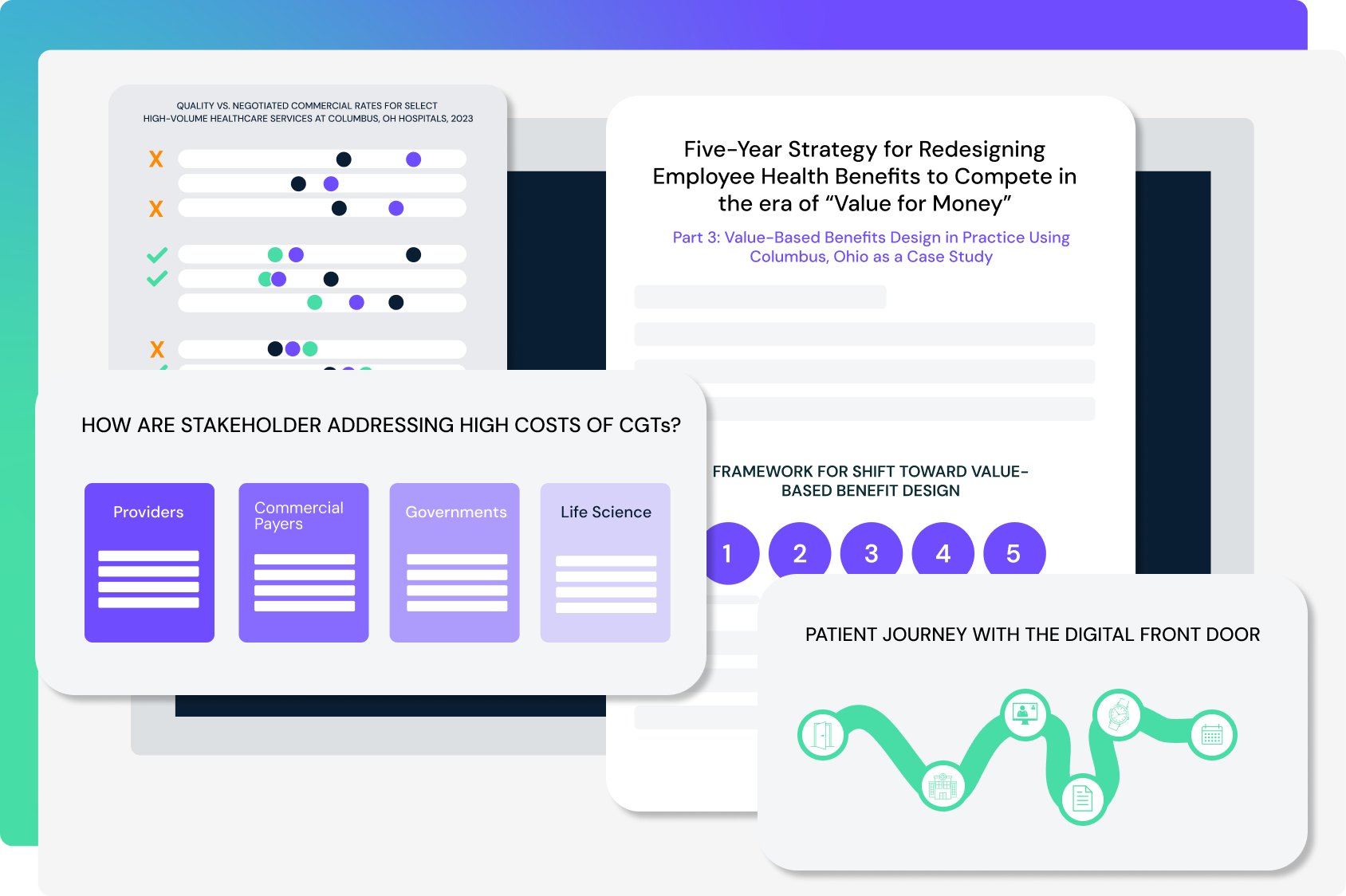2022 Trends Shaping the Health Economy: Telehealth
This study presents a longitudinal analysis of the ways in which Americans utilized telehealth from March 1, 2020, through November 30, 2021, using a variety of claims and consumer datasets.
- Introduction
- Demand
- Supply
- Yield
- Conclusion
- Methodology
Report Summary
It is well established that telehealth utilization increased exponentially in the face of the COVID-19 pandemic. Yet, stakeholders have yet to distinguish between which telehealth trends are a temporary function of “forced adoption” versus those that will influence longer-term behaviors.
To date, most of the research conducted on the topic of telehealth has been limited to what has happened, rather than understanding the factors that will inform what will happen. As a result of the unprecedented increase in demand and, more importantly, a tendency to extrapolate the “what” without the “why,” we have seen health systems, payers, employers, policymakers, and investors aggressively pursue telehealth expansion strategies.
To understand the post-pandemic market more precisely, this report applies the laws of economics to a longitudinal analysis of the ways in which Americans utilized telehealth from March 1, 2020, through November 30, 2021.
Key Takeaways
- Only 25.6% of Americans utilized a telehealth modality during the pandemic under the broadest definition of telehealth (i.e., audio-video, audio-only, chat, etc.).
- For telehealth visits reimbursed by a third-party payer, 46% of patients used telehealth only once.
- Given the effective marginal cost of telehealth is $0, suppliers charging $50-$75 for telehealth visits will not be viable competitors in the long-term.
Methodology
A variety of data sources were leveraged as part of this research, with most insights gleaned from Trilliant Health’s proprietary datasets with visibility into patients and providers across the country. Trilliant Health’s national all-payer claims dataset combines commercial, Medicare Advantage, traditional Medicare and Medicaid claims, which provides a nationally representative sample accounting for more than 300 million American lives on a deidentified basis. Trilliant Health’s consumer dataset includes a range of psychographic (e.g., behaviors, preferences), demographic, social determinants (e.g., broadband) and lifestyle (e.g., wearable) data, inclusive of variables sourced from third-party datasets.
Trilliant Health’s Demand Forecast leverages General Linear Mixed Models (GLMMs) in combination with more than 100B rows of claims data to project future demand for healthcare services over a 5- and 10-year horizon. Trilliant Health’s Provider Directory enables a direct view into providers and their practice patterns.
Additional data were obtained from a variety of public sources, including individual company financial statements, Census Bureau, Kaiser Family Foundation, the Congressional Budget Office, American Hospital Association, American Medical Association, Centers for Disease Control and Prevention, Healthcare Cost Report Information System and the Bureau of Labor Statistics.
About the Author

Compass+
Track the latest developments across the health economy.
Subscribe to Compass+ for additional analyses, market-specific trends, ongoing tracking throughout the year and more. With a subscription, you will receive:
- Tailored analysis and health policy insights
- Interactive data dashboards to track trends
- Executive commentary and perspectives
- A slide library to inform internal presentations